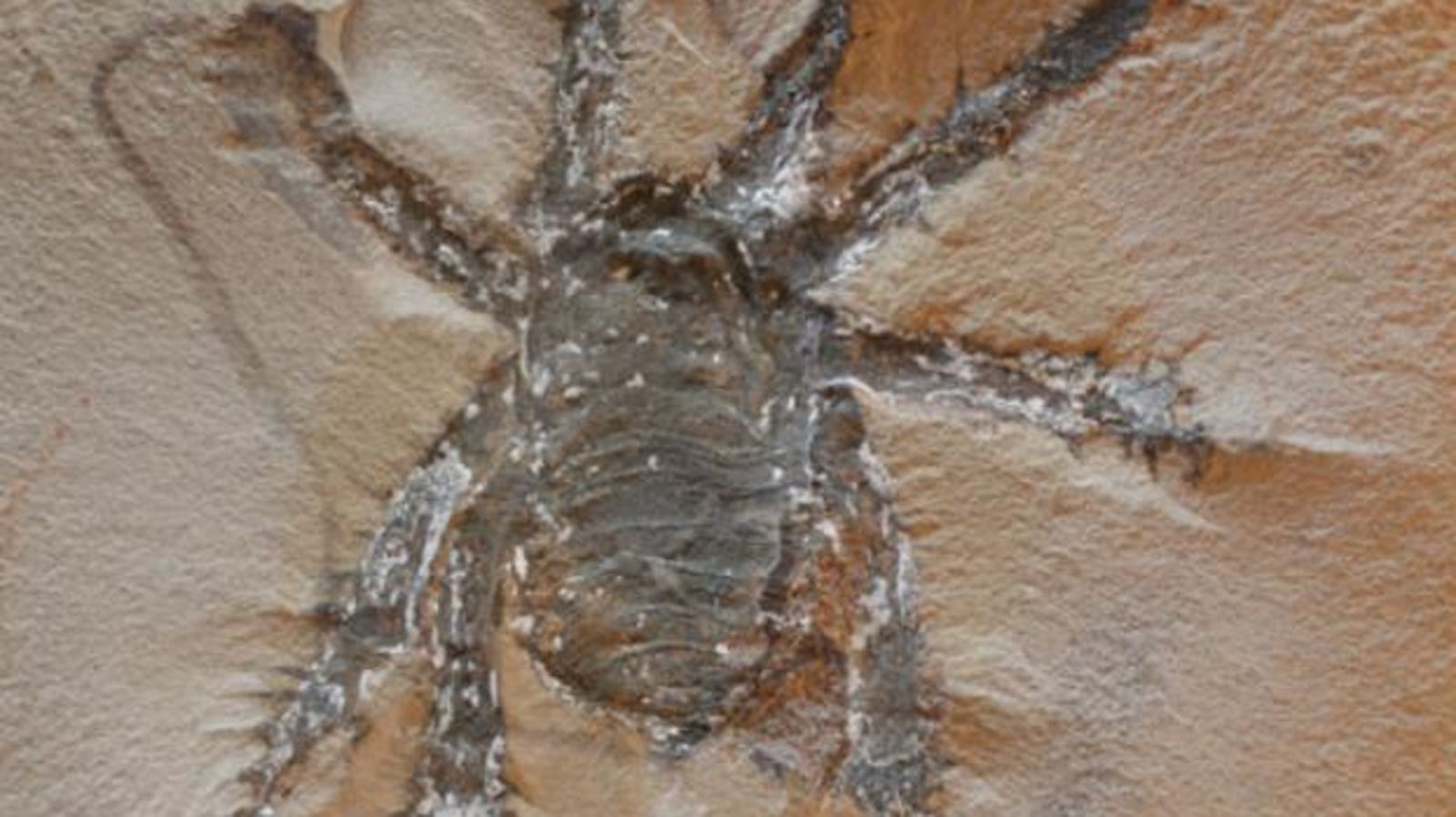A fascinating new species of arachnid from the Late Carboniferous has been introduced in a new … [+]
Many people harbor the mistaken belief that most of the world’s animals have already been discovered. But this is not so. According to some estimates, up to seven million species have yet to be named. Given that approximately 1.5 million species have been officially documented for science, this leaves 80% or more waiting to be discovered.
When we start talking about historical species, their number becomes even greater.
So it should come as no surprise that a new species of arachnid dating from the Late Carboniferous (about 300 million years ago) has been discovered by a research team in the Mazon Creek fossils in northern Illinois. They recently published their finding in Journal of Paleontology.
“The Mazon Creek-Lagerstätte fossils are rightly known for the abundance of marine and non-marine fossil biota found in ironstone clay concretions that were collected from the waste heaps of the old mines around Braidwood in northeastern Illinois,” state the authors, led by Paul Selden from the University of Kansas.
Fossils of many extant and extinct groups of arachnids have been found in Mason Creek in the past. What is surprising about the new discovery, however, is how morphologically unique this spider is.
“The new fossil from Mason Creek is clearly something very different from any previously described arachnid from this or any other Coal Measures locality,” the authors say. “It is characterized by the distinctive habit of an egg-shaped body and strong and very spiny legs. The preserved combination of characters makes it difficult to place the fossils in any known order of arachnids.
A drawing of what the new fossil species, Douglassarachne acantopod, may have actually looked like … [+]
The authors believe that the spines on each of the spider’s eight legs evolved as a defense against predators. They point to spines in other Late Carboniferous arthropods, such as trigonotarbids and centipedes, which lacked spines in their earlier relatives, as evidence that spines were an adaptation unique to that period of history.
They also note the resemblance to some living arachnids – including several species of armored harvestmen – which are also thought to display spines on their legs and body as a degree of defense against predators.
And while we can only imagine what this petrified spider might have looked like in real life, we can look to some living “spiny spiders” for clues about its morphology and characteristics. Here are two:
1. Green lynx spider
A green lynx spider, Peucetia viridans, sits on a leaf at night in Belize.
The green lynx spider boasts a vibrant green hue and is usually spotted living among foliage. The largest member of the family Oxyopidae, this arachnid is distributed throughout the southern United States, Mexico, Central America, and various islands in the West Indies, especially Jamaica.
Lynx spiders are well-adapted hunters. Eschewing the use of nets to capture their prey, they instead employ a feline hunting technique, pouncing on unsuspecting victims. This behavior earns them the name “lynx spiders”.
Active during the daylight hours, these spiders exhibit a variety of physical characteristics. Females can reach up to an inch in length, while males, more slender in build, usually measure around half an inch. Their legs, ranging from green to yellow, are decorated with long black spines, a common feature among Oxyopidae species, dotted with dark spots.
2. Spiny Orb-Weaver
Spiny orb weavers are generally docile spiders that only bite when they feel threatened.
The spiny orb weaver spider, true to its name, boasts a rounded abdomen adorned with numerous spines resembling the shape of a crab shell. These spines, often brightly colored in shades of white, yellow, red or black, serve as both a form of defense and a visual deterrent against potential predators.
Found primarily in tropical and subtropical regions around the world, including parts of North and South America, Africa and Asia, this species has attracted attention for its striking morphology. In addition to its striking physical attributes, the spiny orb weaver spider is known for its dexterity in building elaborate orb webs that it uses to trap prey. These webs, meticulously woven with silk threads, have a characteristic spiral pattern radiating from the center where the spider patiently awaits its next meal.
The spiny orb weaver is a small spider, typically ranging from five to nine millimeters in length for females and slightly smaller for males. Their bites are not dangerous to humans.



